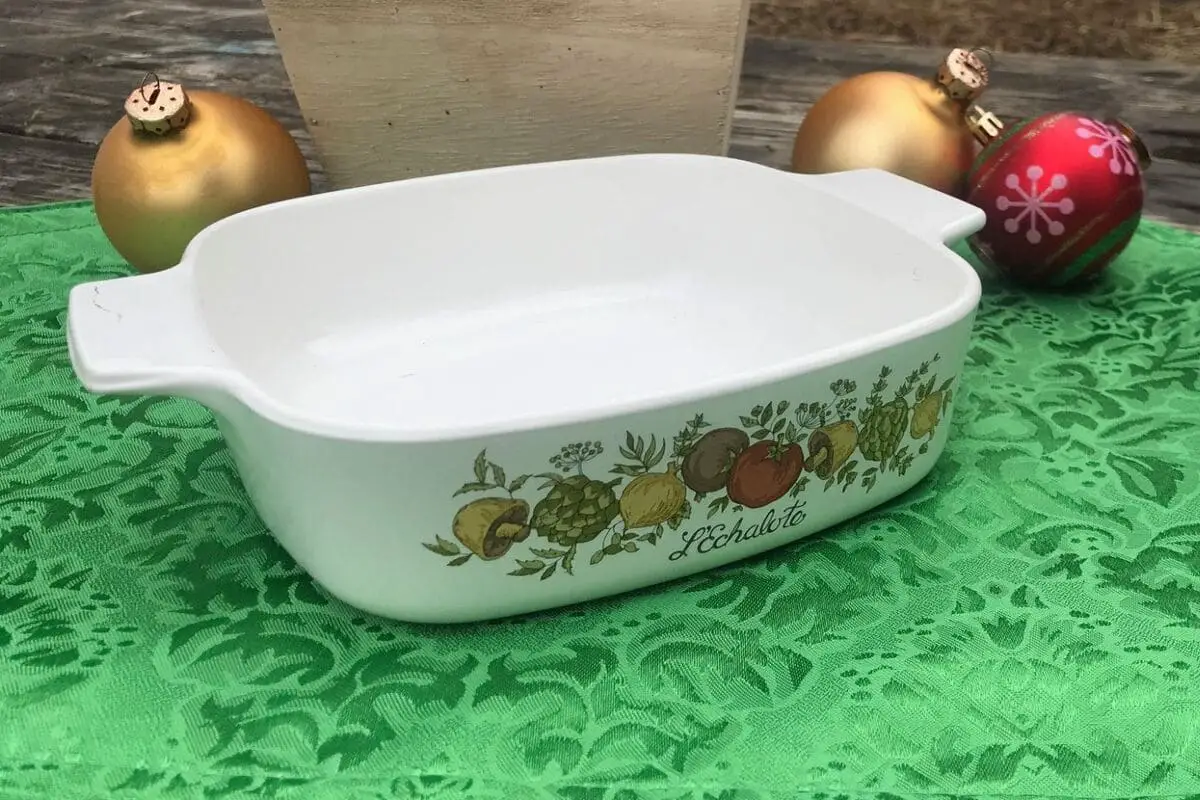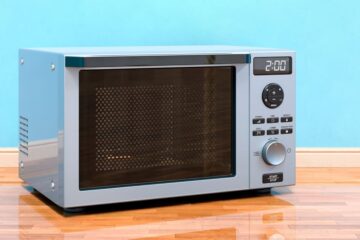As cooking enthusiasts, we are always on the lookout for the best and safest cookware. Vintage Corningware has been a staple in many kitchens for decades. However, concerns about the safety of this cookware have emerged in recent years. In this article, we will explore the question, “Is vintage Corningware toxic?” We will examine the characteristics of vintage Corningware, the materials used to make it, and the potential risks associated with its use. We will also discuss tips for using and disposing of vintage Corningware safely.
What is Vintage Corningware?
Vintage Corningware is a type of glass-ceramic cookware that was first introduced in the 1950s. It is known for its durability, versatility, and stylish designs. Some of the characteristics of vintage Corningware include:
- It is made from a unique glass-ceramic material that can withstand high temperatures and sudden temperature changes.
- It is lightweight and easy to handle.
- It can be used for cooking, baking, serving, and storing food.
- It comes in a variety of shapes, sizes, and colors.
Types of Corningware Vintage
Corningware is available in various types, including:
- Corningware Pyroceram – This is the original type of Corningware that was made from a glass-ceramic material known as Pyroceram. It was produced from the 1950s to the 1990s.
- Corningware Stoneware – This is a newer type of Corningware that is made from stoneware. It is not as popular as Pyroceram Corningware.
- Corningware French White – This is a type of Corningware that is made from stoneware and is coated with a white enamel. It is commonly used for baking and serving.
How to Identify Vintage Corningware?
To identify vintage Corningware, look for the following characteristics:
- It will have the Corningware logo on the bottom.
- Vintage Pyroceram Corningware is usually white or off-white, while stoneware Corningware can come in a variety of colors.
- It will have a unique texture that is different from other types of cookware.
- It will be lightweight and easy to handle.
Why is Vintage Corningware Popular?
Vintage Corningware is popular because of its durability, versatility, and style. It can be used for cooking, baking, serving, and storing food, which makes it a convenient and practical choice for many households. Its stylish designs and colors also make it a popular collector’s item.
What Makes Corningware Safe?
Corningware is considered safe for cooking and serving food. Here are some of the reasons why:
Materials Used in Corningware
Corningware is made from a glass-ceramic material that is non-porous and non-reactive. This means that it does not absorb odors, flavors, or stains from food. It also does not react with acidic or alkaline foods, which can cause other types of cookware to corrode or discolor.
How Corningware is Made?
Corningware is made by fusing glass and ceramic materials together at high temperatures. This process creates a material that is strong, durable, and able to withstand extreme temperatures. Corningware is also designed to be thermal shock-resistant, which means it can go from the freezer to the oven without cracking or breaking.
Advantages of Corningware
Corningware has several advantages that make it a popular choice for cookware:
- It is durable and long lasting, making it a cost-effective option in the long run.
- It can be used in multiple cooking methods, such as stovetop, oven, microwave, and even on the grill, making it a versatile option in the kitchen.
- Corningware is non-porous, meaning it does not absorb flavors, odors, or stains, making it easier to clean and maintain.
- It evenly distributes heat, which ensures that food is cooked uniformly and reduces the chances of hot spots that can burn food.
- Corningware is also aesthetically pleasing and comes in various designs and colors that can add a touch of elegance to any kitchen.
Safety Standards for Cookware
The United States has strict safety standards for cookware, which ensures that all cookware products, including Corningware, are safe to use. The U.S. Food and Drug Administration (FDA) regulates cookware and ensures that it meets certain standards for quality and safety.
The FDA regulates cookware based on the materials used in their manufacturing, such as ceramic, metal, or glass. The FDA also ensures that cookware is free from harmful chemicals, such as lead and cadmium, which can cause health problems.
What Makes Corningware Toxic?
While Corningware is generally safe, some older versions of Corningware may contain toxic materials that can be harmful to human health. Corningware produced before the 1990s was made with a material called pyroceram, which contained a small amount of lead.
Lead is a toxic heavy metal that can cause serious health problems if ingested or inhaled. Prolonged exposure to lead can lead to lead poisoning, which can cause symptoms such as headaches, abdominal pain, fatigue, and even brain damage.
Risks Associated with Toxic Cookware
Cooking with toxic cookware can expose individuals to harmful chemicals, such as lead, cadmium, and arsenic, which can cause various health problems. Prolonged exposure to these chemicals can increase the risk of certain types of cancer, kidney disease, and reproductive problems.
How to Identify Toxic Corningware?
To identify toxic Corningware, you can look for certain markers that indicate the presence of lead. Vintage Corningware that contains lead may have a bluish tint on the white surface or a yellow or brown tint on the surface of colored Corningware. Additionally, vintage Corningware that contains lead may have a slightly heavier weight than newer versions.
Are Vintage Corningware Pieces Safe to Use?
Whether vintage Corningware pieces are safe to use depends on various factors, such as the age of the piece and whether it contains toxic materials. If you own vintage Corningware, you should take certain precautions to ensure its safety.
Factors That Affect the Safety of Vintage Corningware
The safety of vintage Corningware depends on several factors, including its age, condition, and use. Older pieces of Corningware are more likely to contain lead, and their condition may be compromised due to wear and tear over the years. Additionally, using vintage Corningware to cook acidic or alkaline foods may cause it to leach harmful chemicals into the food.
Tips for Using Vintage Corningware Safely
- If you decide to use vintage Corningware, you should take certain precautions to ensure its safety:
- Avoid using vintage Corningware for acidic or alkaline foods, as this can cause it to leach harmful chemicals into the food.
- Avoid heating vintage Corningware too rapidly, as this can cause it to crack or break.
- Do not use vintage Corningware if it is cracked or chipped, as this can cause it to release harmful chemicals into the food.
Potential Risks Associated with Using Vintage Corningware
Using vintage Corningware can expose you to potential health risks due to the materials that were used in the manufacturing process. While Corningware is generally safe to use, older versions of the cookware may contain toxic chemicals that can leach into your food and cause harm.
One of the primary risks associated with using vintage Corningware is the presence of lead in the glaze. Lead was commonly used in the glaze of ceramic cookware until the 1980s, when it was discovered that prolonged exposure to lead could cause serious health problems. Lead poisoning can cause damage to the brain, kidneys, and other organs, and can even be fatal in severe cases.
Another potential risk associated with using vintage Corningware is the presence of cadmium in the glaze. Cadmium is a toxic heavy metal that can cause cancer and other serious health problems when ingested in large amounts. While cadmium was never used in the manufacture of Corningware, it was sometimes used in the decoration of ceramic pieces, including some vintage Corningware items.
It’s also worth noting that some vintage Corningware pieces may have been damaged over time, which can compromise their safety. For example, if the glaze is chipped or cracked, it can allow harmful chemicals to leach into your food. Additionally, if the cookware has been exposed to extreme temperatures or drastic temperature changes, it may be more likely to crack or break during use, which could be dangerous.
How to Dispose of Unsafe Cookware?
If you have vintage Corningware that you believe may be unsafe to use, it’s important to dispose of it properly. Here are some steps you can take to safely dispose of your old cookware:
- Do not donate it to charity or give it away. Vintage Corningware that may be unsafe to use should not be passed on to others, as it could put their health at risk.
- Wrap it in newspaper or bubble wrap to prevent it from breaking and potentially harming someone.
- Place it in a sturdy box or bag and label it as “broken glass” or “fragile.”
- Dispose of it in your regular trash, or take it to a landfill or hazardous waste disposal facility if your area offers this service.
Conclusion
While vintage Corningware can be a charming addition to your kitchen, it’s important to consider the potential health risks before using it. While Corningware is generally safe to use, older versions of the cookware may contain toxic chemicals that can leach into your food and cause harm. If you have vintage Corningware that you believe may be unsafe to use, it’s important to dispose of it properly and consider using safer alternatives for your cooking needs. By taking these precautions, you can help protect yourself and your loved ones from the potential dangers of toxic cookware.



![My Samsung Microwave Door Won't Close [Solved] my samsung microwave door won’t close](https://thekitcheneye.com/wp-content/uploads/2023/04/my-samsung-microwave-door-wont-close-360x240.jpg)
